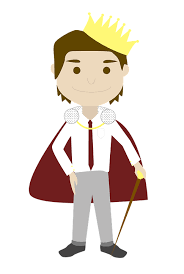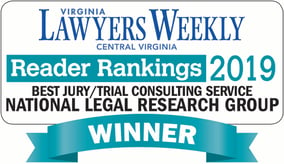June 7, 2017

The initial tips in our Tips series have focused on setting the stage for effective voir dire (Tip 1; Tip 2; and Tip 3) and capitalizing on open-ended questions (Tip 4) to increase our understanding of jurors. Now I turn to a major problem in jury selection, the looking good bias, and how to avoid evoking it in jurors. (Click here to see a short video for this tip.)
Looking Good Bias
The “looking good” bias (i.e., the socially desirable response bias) is an impression management strategy designed to portray a positive image of oneself to others. This bias promotes responses that are not true reflections of the individual’s beliefs or experiences, but reflect a desire by the individual to have others think positively of him or her. In the case of jurors, this looking good bias fosters answers that reflect what jurors think the lawyer wants to hear or what they think are socially acceptable answers designed to create a positive impression of themselves. Obviously, this is exactly what we don’t want jurors to do. The looking good bias is fundamentally different from biases that can arise out of (a) exposure to case information whose influence is unrecognized by jurors or (b) implicit bias that reflects a general bias against a party.
Both of these biases reflect processes on a nonconscious or unconscious level. The looking good bias reflects a conscious decision on the part of jurors to suppress true and honest answers in hopes that the lawyers, the judge, and/or the public will think positively of them. Finally, while the answers fostered by the looking good bias and those provided by agenda-driven jurors are often the same (e.g., “I can be fair”), the looking good bias does not have at its core a desire to be seated on the jury but a desire to be perceived in a positive light.
Triggering the Looking Good Bias: “Hey, I’m Not Biased!”
Group voir dire and, to a lesser degree, individual voir dire are situations that promote the looking good bias. Major contributors to this phenomenon are that (a) questioning is often conducted by relatively higher status individuals, e.g., the judge; (b) answers are given in a pubic setting, both in court (i.e., in front of their fellow jurors, attorneys, the judge, court personnel, and spectators) and in terms of potential media coverage; and (c) importantly, the focus of the voir dire is to evaluate potential jurors in terms of whether they are suitable for service in a particular case. The latter factor is key in that evaluation concerns (evaluation apprehension) are what drive the looking good bias. These factors prime the pump for the looking good bias.
While the previously mentioned factors prime the pump, the way many questions are phrased during voir dire subsequently triggers the looking good bias. Consider the following examples:
“Do you have any biases against big corporations?”
“Could you be fair and impartial?”
“You would follow the judge’s instructions, wouldn’t you?
“Do you understand that the law says that defendant does not have to take the stand?”
Each of the questions above, in its own way, signals what the correct answer is. In looking at the above questions, it is pretty obvious what the “correct” answers are:
“No, I am not biased against big corporations.”
“I could be fair and impartial.”
“Sure, I can follow the judge’s instructions.”
“Yes” or shaking head yes. (While thinking, “Even if I didn’t understand, do you think I would let the other jurors know that I am not as smart as they are?”)
Avoiding the Looking Good Bias
While pressures to look good are great in the voir dire setting, particularly with group questioning, there are a number of tools we can use to minimize the looking good bias. Here are a few that can help:
Use juror questionnaires. Supplemental juror questionnaires are an excellent tool in securing relatively more candid answers from jurors. Because answers are given in a less public environment, i.e., completing a form/questionnaire versus making statements in open court, juror candor and honesty is maximized.
Reframe the inquiry. Jurors are told (often repeatedly) that the main qualification for jury service is their ability to be fair and impartial, e.g., “we are looking for fair and impartial jurors.” Jurors know that they are being evaluated (priming the looking good bias) in light of that standard or “frame” and that subsequent impressions of them are judged against it. What we need to do is to frame the inquiry in a slightly different manner. The first step is to explore bias in a less judgmental manner so as to minimize the stigma of “bias.” Discuss with jurors the concept of “lenses” (i.e., biases) and how they can influence our views of different situations. That these lenses arise from our different life experiences and beliefs and everyone has them. And that it is simply part of being human. The second step is to reframe the nature of the voir dire inquiry. Voir dire is the time when an open and candid discussion of these lenses is critical. In answering questions, the “correct” answers are those that reflect total honesty and candor. The result of this two-step process is the establishment of a “safe” and supportive environment where jurors can reveal their own personal “lenses.” In this manner, the context for voir dire is reframed in a manner that minimizes the looking good bias.
Ask open-ended questions. Since the looking good bias fosters a search for the “correct” or socially acceptable answer, questions should avoid clues or hints as to what the “correct” answers are. Open-ended questions (see Tip 4) are useful in exploring issues and beliefs without giving hints as to what the correct answer is. The following questions illustrate this approach:
“What are your views or opinions regarding big corporations today?”
“What would be your impressions of a defendant who does not take the stand?”
Neither of the above questions provides clues to the socially acceptable or correct answer.
Neither of the above questions provides clues to the socially acceptable or correct answer.
Focus on difficulty not ability. Research has shown that focusing on a juror’s ability to do something decreases honesty and candor. Doing so increases pressures to look good by explicitly or implicitly challenge the juror’s self-image. Examples of ability-type phrasing are:
“Would you be able to consider early childhood upbringing as mitigation evidence?
“How many of you could award money damages for pain and suffering?”
Jurors are reluctant to admit shortcomings in their abilities, particularly in a public setting. However, the effects of the looking good bias can be reduced by focusing on difficulties or reservations instead of ability.
“Would you have any reservations in considering early childhood upbringing as mitigation evidence?
“What difficulties would you have in awarding money damages for pain and suffering?”
It is easier for jurors to admit that they would have difficulties or reservations in doing something the law requires (e.g., considering mitigation evidence or awarding money damages for pain and suffering) than to admit they would be unable to do so.
Focus on undesirable behaviors not bias. Finally, while jurors are reluctant to admit bias, they are less reluctant to endorse positions that reflect such bias. Showing the judge that jurors will not discharge their responsibilities as jurors—thus revealing bias—is the key. Consider the following questions:
“How many of you feel that preponderance of the evidence is too low of a standard in cases involving damages in the millions of dollars?”
“How many of feel that you would need to be 100% certain that the defendant committed the crime before you would convict him/her?”
“At this time, how many of you are leaning toward (the opposing party)?
“How many of you believe that it is just not right to award money for pain and suffering?”
Fostering Honesty and Candor
Effective voir dire relies on jurors answering questions in as honest and candid manner as possible. Recognizing the looking good bias and taking steps to minimize its presence is fundamental to your success in group voir dire. As we will see in our next tip, crafting questions with the “bad” answer in mind is the next step in conducting effective voir dire. But we will cover that later.
We will be covering additional tips in the months to come. Check out our introductory two-minute video, Tip 1, Tip 2, Tip 3 Tip 4, and the video for Tip 5.
For more information on voir dire and jury selection, see Mastering Voir Dire and Jury Selection. The fourth edition of this book is scheduled for release by ABA Press in fall 2017!



